








SAMAA Aerial Concepts Combined Power National 2020By Willie Bodenstein The SAMAA Aerial Concepts Combined Power National 2020 was this year again held at the Henley RC Airfield and Family Entertainment Centre and what a lovely venue with friendly people and well cared for facilities it is. This weekend was the first since the downgrading of the country to Covid level one and the general aviation came alive. On Thursday, Heritage Day, Heidelberg hosted the Great Train Race Fly in and on Saturday, the Groblersdal Flying Club also hosted a fly in. The weeklong Soaring Society Regionals culminated on Saturday while MISASA held their annual Africa Cup at Numbi in Mpumalanga. Pilot's Post had representation at all these events. Four of which we are reporting on today. One, the Africa Cub that ends today, will be held over to next week's edition. Starting on Thursday, Heritage Day, the SAMAA Aerial Concepts Combined Power National Nationals ran until Sunday. On Thursday the weather was fine, as it was every day except that by Friday, the wind picked up at times gusting at almost 39 Km/h. The South African Model Aircraft Association (SAMAA) is the governing body for model aircraft activities and is delegated by the South African Civil Aviation Authority and the Aero Club of South Africa to provide a membership service to those interested in the building and flying of all forms of model aircraft. General scenes from the Nationals. SAMAA started life in August 1937 as the South African Model 'Aeronautic' Association. The association was formed on initiation of Viv Gracie of Cape Town, Phil Dalgety of Durban and Alf Yardley of Johannesburg. Up to the mid-1950s, the activities were mostly free flight and control line. In 1958, radio control activities became popular and a body was established to take care of competitive activities. In 1986, there was a move to once again unite all aeromodelling activities under a single body and SAMAA as it is today was formed. A typical jet aircraft. The association provides a service to its members service that includes, but is not limited to, advice and guidance, registration of clubs and flying sites, public liability insurance cover, event approvals, communication through a newsletter and the web. It also handles the management of radio frequencies, flying proficiencies, rules and regulations, local, regional, national and international competitions, representation, shared use of airspace and affiliations to other bodies with similar interests. Typical Pylon Racers. The main motivation of a combined nationals is to create an opportunity to grow the competitive aspect of the SIGs, at an affordable level. The 2015 Aerial Concepts Combined Nationals was an unqualified success, with six disciplines being contested. The 2016 Nationals was even bigger and the four days proved to be too few for the nine disciplines. For the 2017 Nationals, the entry numbers were somewhat smaller and for 2018 we had a record number of entries, for 2019 entries were smaller. Typical MAASA aerobatic aircraft. For 2020, under the CV-19 circumstances and with continued support from Dean Grobbelaar of Aerial Concepts who again stepped up to the plate five Special Interest Groups (SIG) namely MAASA (RC Aerobatics), SAMPRA (Pylon Racing), SAMJA (Jets) and LSA (Large Scale Aerobatics). Typical LSA aerobatic aircraft It was agreed that each SIG will provide its own operational needs (judges, equipment, scoring, etc), and there has been general agreement to share equipment, personnel, flying locations and airspace where possible and practicable. 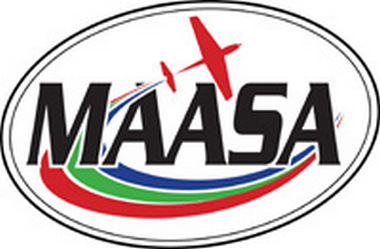 The participants. The Judges. Ronald Suhrmuller and caller in action on Saturday. Neil Twomey and caller Joshua getting ready for take-off. 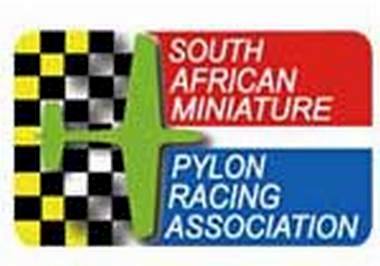  Generally, four high speed model aircraft will take off at 1-second intervals to allow their pilots to compete against each other and the clock. Every pilot has a helper/caller who releases the model at the start and guides the pilot through a race, giving him an indication of when to turn based on optical signals from the course officials and informs him of the progress of other pilots in the race. One measured lap of the course is 400m and the 10-lap triangular course gives a total distance of 4km. Pilots are penalised with extra time being added to their scores for each occurrence where the model aircraft turns inside the marker pylons (cuts). Speeds of well over 300km/h are quite common in some of the classes. Judges (flagmen) are situated on the course, to enable them to view model aircraft that "cut" the course.  Stuart Kirby finished 3rd in Standards. 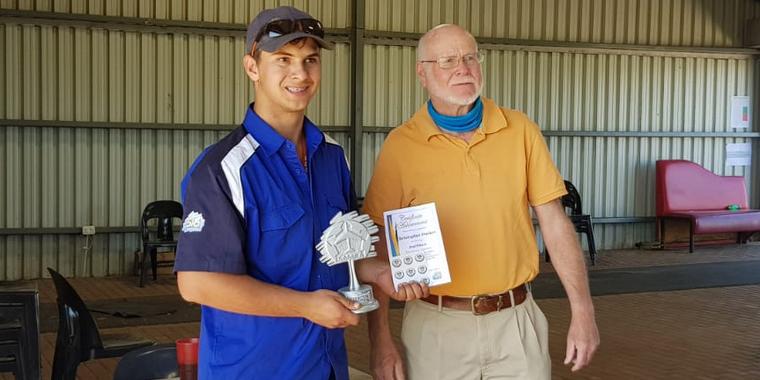 Christopher Parker was placed 2nd... 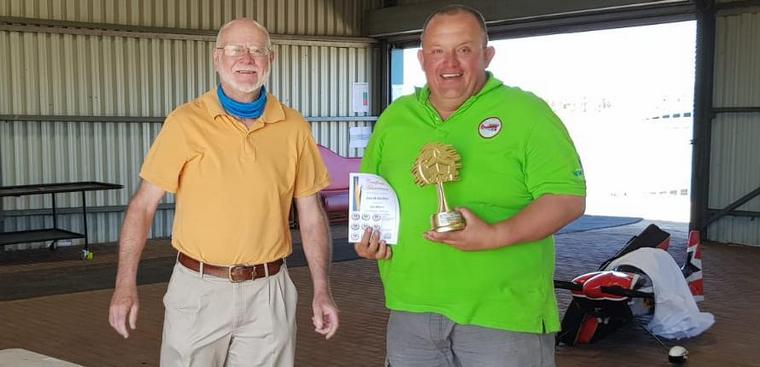 And Sarel Venter 1st. Eben Muller was placed 3rd at the Nationals in Hots Patrick O'Donovan 2nd in Hots And Ronald Suhrmuller was crowned the winner in Hots. 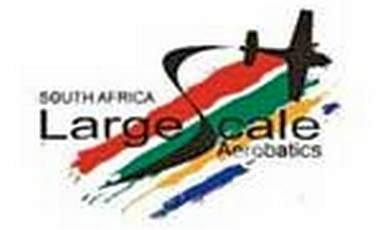 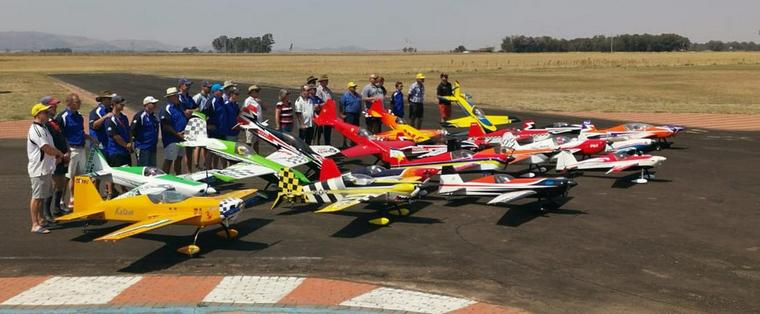 The competitors. Photo by Graham Finch. The judges. Brad Rae on his way to the start line. Juandre van der Schaar. Inspired by full-scale aerobatics, Large Scale Aerobatics South Africa (LSA), a SIG (Special Interest Group) affiliated with SAMAA, strives to fly scale or semi-scale aerobatic model aircraft in a competitive and realistic manner that is challenging for the contestants as well as interesting for spectators. Roston Dugmore (left) after his sequence. Five classes were contested during the Nationals namely Basic, Sportsman, Intermediate, Advanced and Unlimited. Aircraft classes are defined by a Minimum Wing Area and Minimum Engine Capacity. In Basic, Sportsman & Intermediate the minimum wing area is 960 sq. inches and engine size is 18 cc. In Expert wing area is 1000 sq. inches and engine size 30 cc. In the unlimited wing area is 1000 sq. inches and engine size 45 cc. The total dry weight of the aircraft may not exceed 25 Kilograms. Jacques Alberts took 3rd in the unlimited class. Owen Vuyk took 2nd in unlimited. Danie Potgieter took 1st in Unlimited and was judges to be the overall winner.        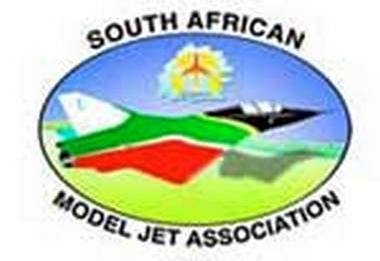 The judges Davon Lambrecht during his sequence. Roland Shurmuller won the SAMJA F3S Sport Jet Class with Dean Grobbelaar 2nd and Danie Potgieter 3rd Johan Powell won the Basic Sport Jet Class followed by Davon Lambrecht with Jaco Henn in third place Because of publication deadlines, we were unable to attend on Sunday, the last day of the event and we apologise for not being able to post photos of most of the prize winners. At the time of publication, the final results of some of the different SIGs and classes were not available. However, we will update this page as soon as we receive it. No event can be successful without the dedication and hard work of a capable organising committee that this year consisted of Danie Potgieter, Bob Skinner, Linda Dold & Roland Suhrmuller, with valued support from the owners of the Henley Model Airfield & Family Entertainment, Marius and Susan Vosloo, as well as each SIG chairman and their respective committees. www.youtube.com/channel/UCCuRVZAGodT6sztTeXBGeMw and subscribe to our YouTube channel  |
                                                   |
 |
 |

Copyright © Pilot's Post PTY Ltd
The information, views and opinions by the authors contributing to Pilot's Post are not necessarily those of the editor or other writers at Pilot's Post.